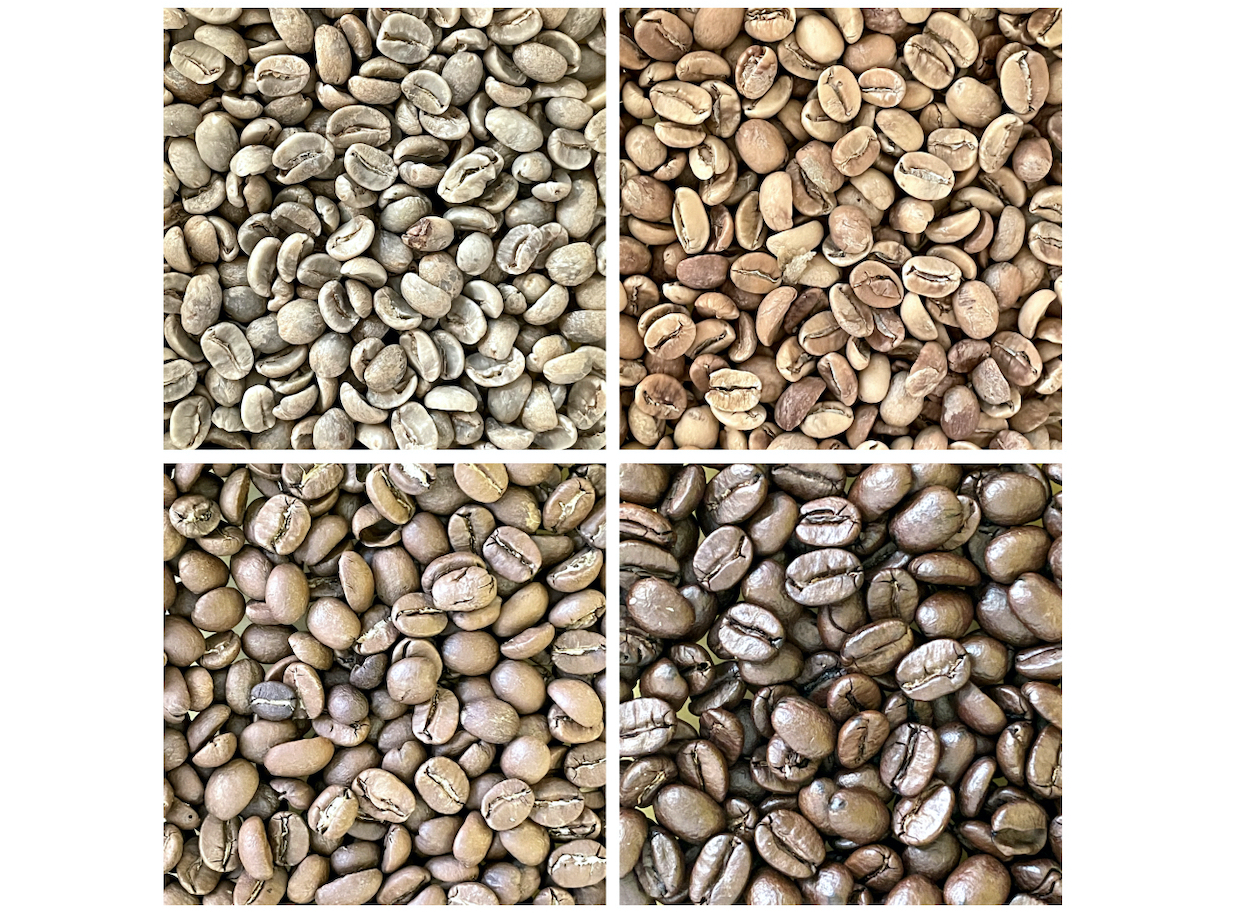
Image showing four different levels of roasted coffee from the paper “Coffee Roast Intelligence.” Image licensed under a Creative Commons Attribution-ShareAlike 4.0 International License.
A new study from researchers in Thailand presents a future in which precise roast levels may be obtained in real time through the snap of a smartphone photo.
For the research project, a team at King Mongkut’s University of Technology Thonburi in Bangkok created an Android app that relies on a deep learning model involving a convolutional neural network (CNN).
CNN models have been used in real-world applications such as facial recognition, medical imagery analysis, object detection within images, and more.
The researchers trained the deep learning model using a small data set involving images of four different coffees at four different roast levels: a green/unroasted coffee; a light-roasted Laos arabica coffee, a medium-roasted coffee from Doi Chaang, Thailand; and a dark-roasted coffee from Brazil’s Cerrado region.
“As the flavor of each variety of coffee is dependent on the degree of roasting of the coffee beans, it is vital to maintain a consistent quality related to the degree of roasting,” the researchers wrote in their paper.
Related Reading
- Understanding Roast-to-Cup Differences through Profile Translation Analysis
- Demystifying Roast Analysis: Colorimeters Versus Spectrophotometers
- ColorTrack Launches Realtime Color Analysis During the Roast
For the data set used in the deep learning, 1,200 images of each of those coffees were processed and uploaded. Once the CNN model was trained, users could upload photos to the Android app to determine which of the four roast levels a given coffee fits into.
While by no means a market-ready solution — particularly given the abundance of precision-focused color analyzing machines currently catering to the coffee roasting industry — the research presents an alternative method for color analysis altogether.
The authors noted that the study is deeply limited by the data set in the study.
“Various factors can influence the color and form of coffee beans. As a result, errors in real use may occur,” they wrote. “A dataset of coffee beans from the same provider must be accessible in order to continue developing this project. This will aid in the prediction of outcomes’ efficiency and correctness.”
Does your coffee business have news to share? Let DCN’s editors know here.
Nick Brown
Nick Brown is the editor of Daily Coffee News by Roast Magazine.






Comment